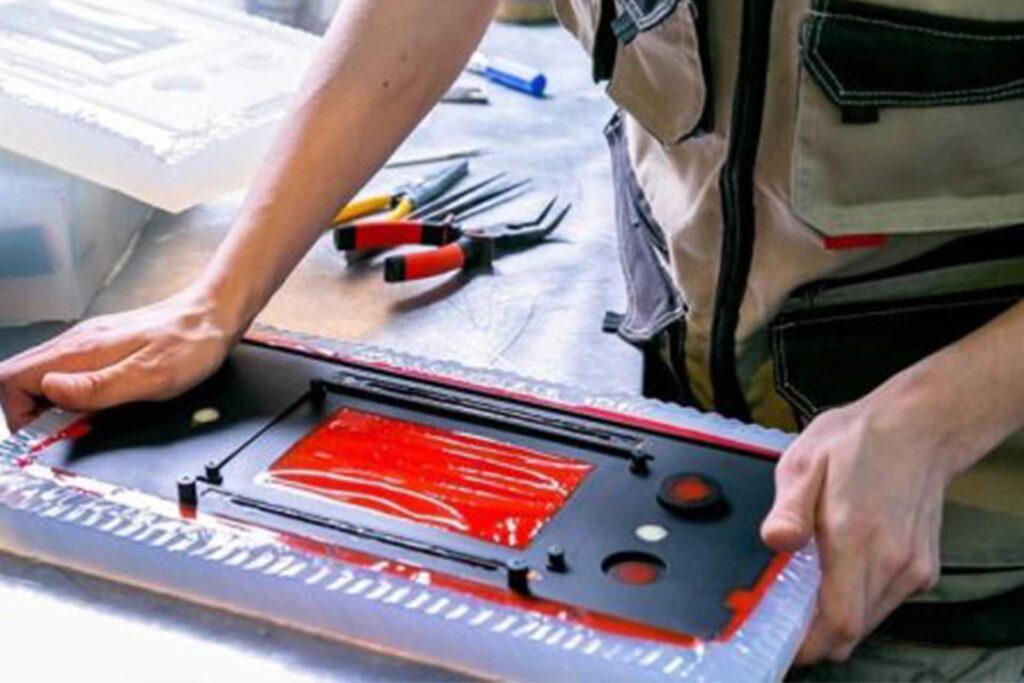The advent of plastic molding technology has led to a revolutionary shift in industrial packaging, replacing traditional wooden pallets with plastic alternatives. This transition not only enhances production efficiency but also optimizes space utilization and promotes environmental sustainability. In this article, we’ll dive into the key benefits and design processes of plastic pallet molding.
When Are Plastic Pallets Used?
Plastic pallets are extensively used across various industries, particularly in supply chain logistics, due to their durability, versatility, and hygienic properties. As the demand for injection-molded plastic pallets continues to rise, manufacturers are adopting efficient production methods, with plastic molding standing out as a crucial technology in this evolution.
Key Features of Plastic Pallet Molding
High Rigidity and Stable Clamping System
Plastic pallet injection molding excels in achieving high rigidity, essential for ensuring mold stability. A stable clamping system, often utilizing four hydraulic systems, minimizes mold deformation, ensuring precise molding and high-quality pallet production.
Faster Mold Changing Speed
One of the notable advantages of modern plastic molding machines is their accelerated mold-changing speed. This is particularly beneficial for manufacturers focused on small-volume, high-variety production, allowing for rapid transitions between molds, minimizing downtime, and maximizing efficiency.
Flexibility in Customization
Plastic molding offers significant flexibility in customizing pallet designs. With features like two-plate designs that allow for side mold exchanges, manufacturers can efficiently produce unique pallet designs, catering to various industry needs. This flexibility enables adjustments to dimensions and features without significant delays.
Plastic Pallet Injection Molding Process
Material Input and Injection
The process begins with the controlled input of plastic into the injection molding machine. The plastic is then heated and injected into a precisely crafted mold, where it takes the desired shape. Cooling and hardening follow to solidify the molded pallet.
Types of Injection Systems
- Low-Pressure Injection: Ideal for lightweight plastic pallets, this system involves injecting plastic with inert gas, creating a cellular core surrounded by rigid plastic.
- High-Pressure Injection: Commonly used for high-density polyethylene (HDPE) or polypropylene (PP) pallets, delivering a high-gloss finish without the need for post-production treatments.
Other Molding Processes
- Thermoforming: Involves heating plastic to a pliable state and forming it over a mold, offering cost-effectiveness for large-scale production.
- Blow Molding: Primarily used for producing hollow pallets, providing excellent durability and low-temperature resistance.
Design Considerations for Plastic Pallets
Intricate and Customized Pallet Designs
Plastic molding technology allows for precise shaping, enabling manufacturers to create pallets with tailored features, such as unique sizes, structures, and load-bearing capacities. This ensures versatility in handling different products and optimizing material handling.
Durability and Resistance
Injection-molded plastic pallets are highly durable, withstanding harsh conditions like moisture and chemicals, making them more reliable than traditional wooden pallets. They also maintain their structural integrity under heavy loads, ensuring a longer lifespan.
Consistency in Dimensions and Weight
Plastic molding ensures consistent dimensions and weight across all produced pallets. This is essential for industries like food and pharmaceuticals, where uniformity in pallet size is crucial for efficient stacking and transportation.
Cost-Effective Shipping and Maintenance
Plastic pallets are lighter than wooden ones, reducing shipping costs and easing handling. Their non-porous nature prevents liquid absorption, making them easier to clean and maintain, especially in industries requiring high hygiene standards.
Steps in Designing Plastic Pallet Molds
- Product Design: Understand the requirements of the plastic pallet, including load-bearing capacity and industry standards.
- Gate Design: Use CAE tools to design multi-point gates that minimize material waste and ensure efficient molding.
- Insert Design: Focus on precision in inserts and waterways for optimal material flow and cooling.
- Ejection Design: Strategically place ejector pins for smooth and efficient pallet removal.
- Selection of Steel: Choose appropriate steel for mold fabrication, ensuring durability and long-term performance.
Conclusion
Plastic molding, especially injection molding and thermoforming, has become a key technology in the production of plastic pallets, balancing cost, efficiency, and environmental impact. The adoption of these advanced molding processes enables manufacturers to produce durable, customizable, and hygienic pallets for a variety of industries.
